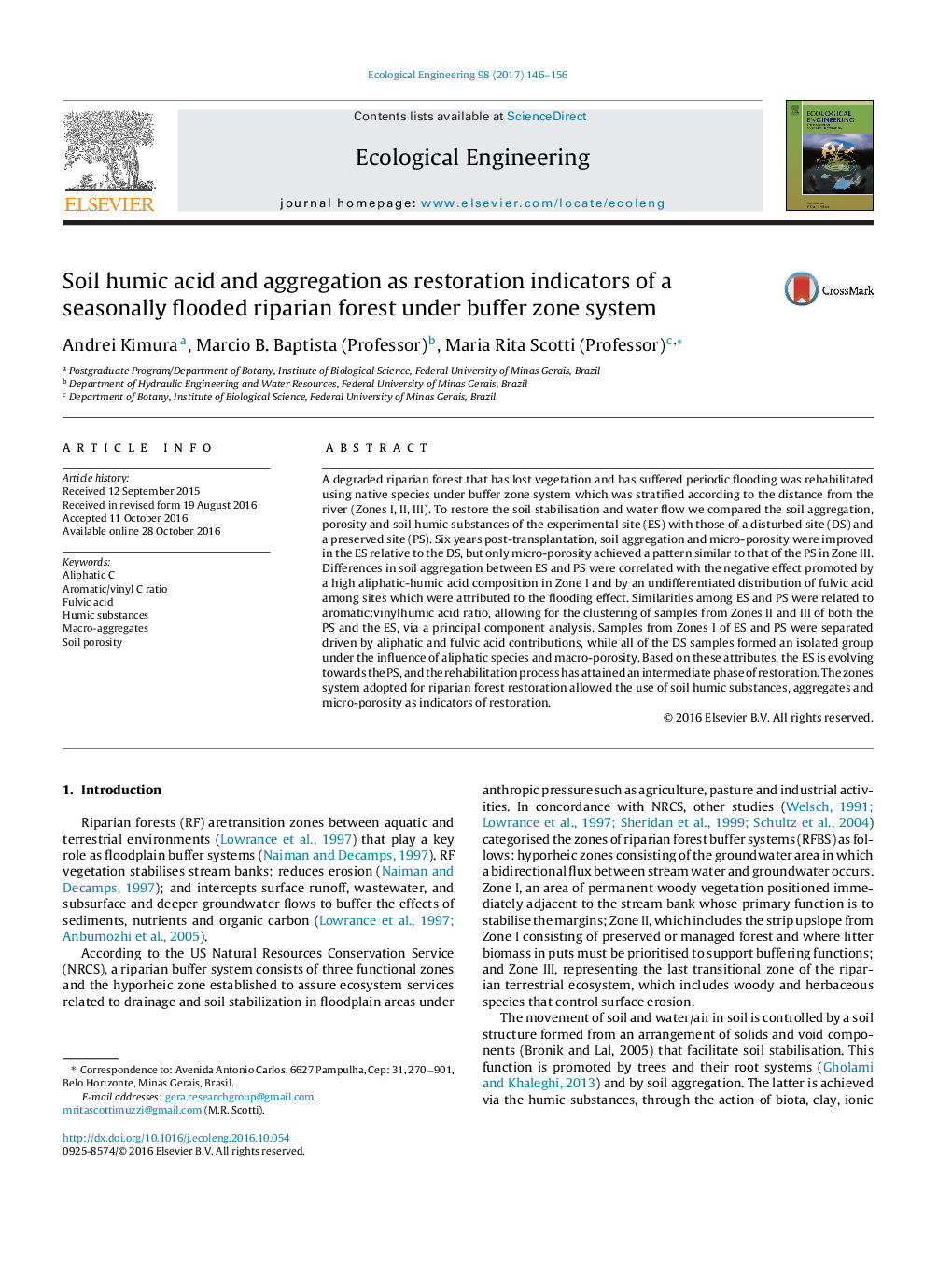| Article ID | Journal | Published Year | Pages | File Type |
|---|---|---|---|---|
| 5744064 | Ecological Engineering | 2017 | 11 Pages |
â¢A riparian forest was established in buffer zones to restore a floodplain.â¢Soil aggregation and humic composition appeared as restoration indicators.â¢The zones systems allowed the experimental site evolve towards the preserved site.
A degraded riparian forest that has lost vegetation and has suffered periodic flooding was rehabilitated using native species under buffer zone system which was stratified according to the distance from the river (Zones I, II, III). To restore the soil stabilisation and water flow we compared the soil aggregation, porosity and soil humic substances of the experimental site (ES) with those of a disturbed site (DS) and a preserved site (PS). Six years post-transplantation, soil aggregation and micro-porosity were improved in the ES relative to the DS, but only micro-porosity achieved a pattern similar to that of the PS in Zone III. Differences in soil aggregation between ES and PS were correlated with the negative effect promoted by a high aliphatic-humic acid composition in Zone I and by an undifferentiated distribution of fulvic acid among sites which were attributed to the flooding effect. Similarities among ES and PS were related to aromatic:vinylhumic acid ratio, allowing for the clustering of samples from Zones II and III of both the PS and the ES, via a principal component analysis. Samples from Zones I of ES and PS were separated driven by aliphatic and fulvic acid contributions, while all of the DS samples formed an isolated group under the influence of aliphatic species and macro-porosity. Based on these attributes, the ES is evolving towards the PS, and the rehabilitation process has attained an intermediate phase of restoration. The zones system adopted for riparian forest restoration allowed the use of soil humic substances, aggregates and micro-porosity as indicators of restoration.
Graphical abstractDownload high-res image (179KB)Download full-size image
